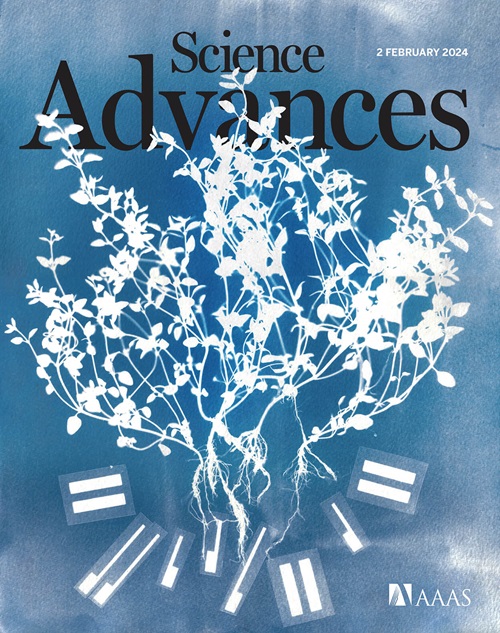Concentric ice-templating of ultracompressible tough hydrogels with bioinspired circumferentially aligned architecture
IF 12.5
1区 综合性期刊
Q1 MULTIDISCIPLINARY SCIENCES
引用次数: 0
Abstract
Materials with circumferentially aligned fibers, such as intervertebral discs and arteries, are abundant in nature but challenging to replicate artificially, despite their mechanical advantages. Although ice-templating can create bioinspired materials, the achievable structures remain limited to simple forms, such as honeycomb, lamellar, and radial structures. Here, we developed a unique ice-templating technique that constructs circumferential fibrous structures in hydrogels through slow freezing. Enhanced with rotary compression annealing, these hydrogels exhibit record-breaking features that cannot concurrently be achieved in conventional ice-templated and top-performing tough hydrogels, including high tensile properties, isotropic fatigue threshold of 2320 joules per square meter, ultracompressibility (8% strain after 500 cycles), and extraordinary burst pressure of 1.6 bar while maintaining 85 weight % water content. These properties enable opportunities in robotics, including hydrogel pneumatic grippers and an untethered bioinspired robotic fish that exhibits high-force actuation and long-term robustness. Our approach enriches the diversity of bioinspired structures in artificial materials, establishing exceptional mechanical properties through cross-length scale structural design.

具有生物灵感的周向排列结构的超压缩坚韧水凝胶的同心冰模板
具有周向排列纤维的材料,如椎间盘和动脉,在自然界中是丰富的,但人工复制具有挑战性,尽管它们具有机械优势。虽然冰模板可以创造生物灵感材料,但可实现的结构仍然局限于简单的形式,如蜂窝状、层状和放射状结构。在这里,我们开发了一种独特的冰模板技术,通过缓慢冷冻在水凝胶中构建周向纤维结构。通过旋转压缩退火,这些水凝胶表现出传统冰模板和高性能坚韧水凝胶无法同时实现的破纪录的特性,包括高拉伸性能,各向同性疲劳阈值为2320焦耳/平方米,超压缩性(500次循环后应变为8%),以及在保持85%重量含水量的情况下高达1.6 bar的非凡破裂压力。这些特性为机器人技术带来了机遇,包括水凝胶气动夹持器和无系绳仿生机器鱼,它们具有高强度驱动和长期稳健性。我们的方法丰富了人工材料中生物启发结构的多样性,通过跨长度尺度结构设计建立了卓越的机械性能。
本文章由计算机程序翻译,如有差异,请以英文原文为准。
求助全文
约1分钟内获得全文
求助全文
来源期刊

Science Advances
综合性期刊-综合性期刊
CiteScore
21.40
自引率
1.50%
发文量
1937
审稿时长
29 weeks
期刊介绍:
Science Advances, an open-access journal by AAAS, publishes impactful research in diverse scientific areas. It aims for fair, fast, and expert peer review, providing freely accessible research to readers. Led by distinguished scientists, the journal supports AAAS's mission by extending Science magazine's capacity to identify and promote significant advances. Evolving digital publishing technologies play a crucial role in advancing AAAS's global mission for science communication and benefitting humankind.
 求助内容:
求助内容: 应助结果提醒方式:
应助结果提醒方式:


